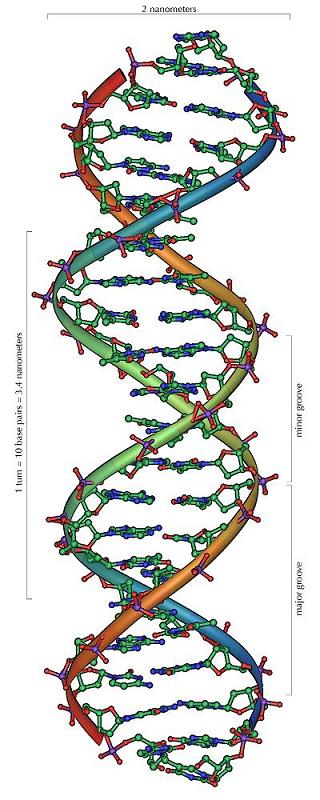Scientists at IBM have developed a method to use folding and self-replication technology, characteristic of DNA molecules, to build tiny electronic circuits.

Scientists at IBM have developed a method to use folding and self-replication technology, characteristic of DNA molecules, to build tiny electronic circuits. The development of this new nanotechnology may lead to the construction of computer chips that are smaller, faster and more efficient in their energy consumption - as well as cheaper to manufacture.
The work at IBM, which is carried out in collaboration with researchers at the California Institute of Technology, focuses on ways to combine lithography technologies - imprinting an image through exposure to light, which is currently used to burn the chip structure onto a silicon wafer - together with the self-assembly capacity of tiny chemical structures, in a format that characterizes the replication processes of molecules DNA. All this while using production equipment that is compatible with the one that is already in the service of the semiconductor industry - which enables savings in the costs of switching to this technology.
The usefulness of this approach stems from the fact that tiny DNA structures placed in a well-controlled manner can be used as templates or as tiny circuit boards, which allow components such as carbon nanotubes, conductive nanowires and other nanoparticles to be precisely assembled and placed next to each other: all in significantly smaller dimensions Of those that the semiconductor manufacturing industry is able to handle with the technologies we know today. Thus, for the first time, the possibility of building functional components that can be integrated into larger structures opens up - as well as learning more about nanostructures arranged in known arrays.
The semiconductor industry is currently faced with the increasing costs of component miniaturization, which limit it in continuing to operate according to the forecast for continuous improvement in performance, as defined in "Moore's Law".
A defined self-assembly array allows a single DNA molecule to assemble itself through a chemical reaction that occurs in solution, between a single tiny strand of viral DNA and between a mixture of even shorter and smaller synthetic fibers. These short components act as paper matchpins for everything: they fold the DNA around itself and into itself, to build a multidimensional structure, through a system of double bonds. The actions of this link can be controlled and directed, and connection points can be offered with a separation and precision of 6 nanometers. In this format, it is possible to create nanostructures such as squares, triangles and stars with width dimensions of 100-150 nanometers, and the thickness of the double helix of the DNA molecule.
IBM uses well-known technologies in the semiconductor world, the same as those used today for the production of chips, in order to burn the lithography patterns required for the production of chips using the new method. Electron beams or light lithography create a series of link points of the desired sizes and structures - which will be suitable for binding defined nanostructures. The materials in the self-assembly pattern are selected in a way that guarantees high sensitivity to the structure of the components attached to each specified position. Thus, it is possible to verify that a tiny origami structure produced in DNA format will fit into the final chip exactly at the point intended for it.
The semiconductor industry is currently facing the challenge of building lithography technologies that will enable the construction of components with a separation of less than 22 nanometers. The scientists focus on examining new types of transistors, which make use of carbon nanotubes or silicon nanowires.
The new approach being tested at IBM, to use DNA molecules as templates that will allow the deposition of millions of carbon nanotubes that will assemble themselves into precise structures through adhesion to the DNA molecule - may provide a way to reach the future miniaturization goals.
More on the subject on the science website
